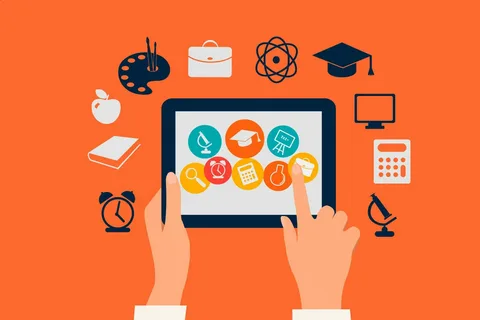
In the ever-evolving landscape of marketing, staying ahead of the curve is not just an advantage; it’s imperative for success. Enter gamification marketing – a dynamic strategy that has been gaining momentum across industries. This article delves into the intricacies of gamification marketing, exploring its transformative potential and how it can revolutionize your marketing approach.
Understanding Gamification Marketing
Gamification marketing involves integrating game mechanics and elements into non-game contexts to engage and motivate audiences. These elements can range from points, badges, and leaderboards to challenges, rewards, and storytelling. By tapping into intrinsic human desires for achievement, competition, and recognition, gamification captivates attention and drives desired behaviors.
The Psychology Behind Gamification
At the heart of gamification marketing lies a deep understanding of human psychology. Games trigger dopamine release in the brain, creating feelings of pleasure and reinforcing behaviors. By incorporating game-like experiences into marketing campaigns, brands can evoke similar emotional responses, fostering customer engagement and loyalty.
Building Brand Engagement
One of the key benefits of gamification marketing is its ability to enhance brand engagement. By providing interactive experiences, brands invite customers to actively participate in their marketing efforts, rather than passively consuming content. This increased engagement fosters stronger connections between brands and consumers, leading to higher brand recall and advocacy.
Driving Desired Behaviors
Gamification marketing excels at incentivizing desired behaviors. Whether it’s encouraging product purchases, promoting user-generated content, or increasing website traffic, gamified experiences motivate users to take specific actions. Through well-designed challenges and rewards, brands can steer consumer behavior towards predetermined goals, ultimately driving business outcomes.
Enhancing Learning and Training
Beyond consumer-facing applications, gamification marketing also holds immense potential for employee training and development. By gamifying training modules, businesses can make learning more engaging and memorable for employees. Interactive simulations, quizzes, and challenges not only improve knowledge retention but also boost employee morale and productivity.
Case Studies: Gamification Success Stories
McDonald’s Monopoly promotion is a classic example of gamification marketing done right. By offering customers the chance to win prizes by collecting game pieces, McDonald’s transformed the act of purchasing meals into a thrilling game experience. The promotion not only drove foot traffic to restaurants but also generated widespread excitement and social media buzz.
Duolingo
Language learning app Duolingo gamifies the process of acquiring new languages through its interactive lessons and progress tracking system. By earning points and virtual rewards for completing lessons, users are motivated to stay consistent with their learning journey. Duolingo’s gamification strategy has been instrumental in attracting and retaining millions of users worldwide.
Implementing Gamification Strategies
Define Objectives
Before diving into gamification, it’s essential to define clear objectives for your marketing campaign. Whether it’s increasing brand awareness, driving sales, or fostering customer loyalty, having specific goals will guide your gamification strategy and measure its success.
Know Your Audience
Understanding your target audience is crucial for designing effective gamified experiences. Consider their preferences, interests, and motivations to tailor game mechanics that resonate with them. Personalization is key to creating engaging and relevant experiences that capture and retain audience attention.
Choose Appropriate Game Mechanics
Select game mechanics that align with your marketing objectives and audience preferences. Whether it’s points, badges, challenges, or leaderboards, each mechanic serves a unique purpose in driving desired behaviors. Experiment with different combinations to find the optimal mix for your campaign.
Test and Iterate
Like any marketing strategy, gamification requires continuous testing and optimization. Monitor user engagement metrics and gather feedback to identify areas for improvement. Iteratively refine your gamification elements based on insights gained from real-world interactions.
Points
Points are a fundamental game mechanic that allows users to earn rewards or status based on their actions. They can be awarded for completing tasks, making purchases, or engaging with content. Points provide a tangible measure of progress and achievement, motivating users to continue participating.
Badges
Badges are visual symbols of accomplishment that users can earn for completing specific actions or reaching milestones. They serve as both a reward and a status symbol, providing users with a sense of recognition and achievement. Badges can encourage competition among users and foster a sense of community.
Challenges
Challenges present users with tasks or goals to accomplish within a specified timeframe. They can range from simple tasks to more complex missions, offering varying levels of difficulty and rewards. Challenges provide users with a sense of purpose and achievement, driving engagement and motivation.
Leaderboards
Leaderboards rank users based on their performance or progress relative to others. They tap into the competitive nature of users, motivating them to outperform their peers and climb the ranks. Leaderboards foster healthy competition and social interaction, driving sustained engagement over time.
Experiment with different combinations of these game mechanics to create a gamified experience that resonates with your audience and achieves your marketing objectives.
Test and Iterate
Once you’ve implemented your gamification strategy, the work doesn’t stop there. Like any marketing initiative, gamification requires ongoing testing and optimization to ensure its effectiveness. Here’s how to approach testing and iteration:
Monitor User Engagement Metrics
Track key metrics such as participation rates, completion rates, time spent, and repeat engagement to gauge the effectiveness of your gamification efforts. Analyze how users are interacting with your gamified experiences and identify areas for improvement.
Gather Feedback
Collect feedback from users through surveys, focus groups, or user interviews to gain insights into their experiences with your gamified campaigns. Understand what aspects they enjoy, what challenges they face, and any suggestions they have for improvement.
Iterate Based on Insights
Use the data and feedback gathered to iteratively refine your gamification elements. Experiment with adjustments to game mechanics, rewards, challenges, or messaging to optimize engagement and drive desired behaviors.
Conclusion
In today’s hyper-competitive marketing landscape, standing out requires innovation and creativity. Gamification marketing offers a compelling solution, leveraging the power of game mechanics to captivate audiences, drive desired behaviors, and build lasting connections. By embracing gamification, brands can level up their marketing strategy and unlock new opportunities for growth and engagement.




